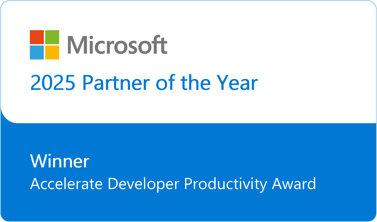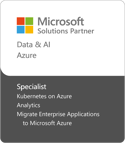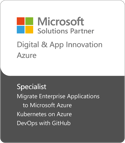In our previous post, we explored the common pitfalls that prevent GenAI initiatives from moving beyond proof-of-concept. Now, let’s talk about the solution that makes enterprise-scale GenAI not only possible—but repeatable, secure, and efficient: Platform Engineering (PE). '
Platform engineering is the unsung hero of modern software delivery. It’s the discipline that builds the internal platforms, tools, and templates that enable developers and data scientists to move fast—without breaking things. And when it comes to GenAI, it’s absolutely essential.
What Is Platform Engineering for GenAI?
At its core, platform engineering is about creating reusable, self-service infrastructure that empowers teams to build and deploy applications quickly and safely. For GenAI, this means:
- Curated templates for common GenAI architectures like Retrieval-Augmented Generation (RAG), fine-tuned models, and embedded copilots.
- Preconfigured environments with built-in governance, access control, and monitoring.
- Automated infrastructure provisioning that eliminates manual setup and reduces time-to-value.
- Self-service portals that let developers spin up GenAI environments on demand—without waiting on IT.
Think of it as giving your teams a “GenAI sandbox” that’s safe, scalable, and production-ready.
Why It Matters: The GenAI Challenge
Rolling out GenAI testbeds without platform engineering is like handing out keys to a Ferrari without a driver’s license. You might get speed—but you’ll also get chaos, cost overruns, and compliance nightmares.
Without PE, organizations face:
- Cloud cost explosions from unmanaged experimentation.
- Security risks from inconsistent access controls.
- Slow delivery due to duplicated effort and lack of standardization.
- Developer frustration from unclear processes and tooling gaps.
With PE, you get:
- Frictionless enablement: Developers can focus on building, not configuring.
- Built-in governance: Guardrails are baked into the platform.
- Faster time to production: Templates and automation accelerate delivery.
- Consistency at scale: Every team uses the same best practices.
What It Looks Like in Practice
InCycle’s GenAI Accelerator Platform is a prime example of platform engineering in action. It includes:
- Prebuilt templates for RAG, RAG Lite, RAG Inferred, and fine-tuned models.
- Sample code and deployment logs to jumpstart development.
- Governance modules for access control, cost management, and monitoring.
- Self-service deployment via a portal that supports tagging, filtering, and versioning.
For instance, a data science team working on a healthcare chatbot can deploy a RAG Lite template with Azure OpenAI, Cosmos DB, and Azure AI Search—all pre-integrated and secured. No need to reinvent the wheel. No need to wait on infrastructure.
The Strategic Payoff
Platform engineering isn’t just a technical solution—it’s a strategic enabler. According to Gartner, by 2026, 80% of software engineering organizations will establish platform teams as internal providers of reusable services and tools.
Why? Because PE:
- Accelerates innovation by removing bottlenecks.
- Improves developer experience through automation and self-service.
- Reduces risk by enforcing standards and policies.
- Maximizes ROI by making GenAI adoption repeatable and scalable.
In short, platform engineering makes it easy to do the right things—and hard to do the wrong ones.
Coming Up Next
In the next post, we’ll dive into how to identify, prioritize, and design high-impact GenAI use cases. You’ll learn how to move from “what’s possible” to “what’s valuable”—and how to build a roadmap that delivers results.
NEXT:
Part 4: Identifying & Designing GenAI Use Cases for Maximum ROI
BACK:
Part 2: Overcoming GenAI Adoption Challenges: From PoC to Production









